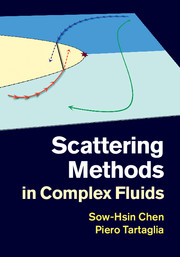Book contents
- Frontmatter
- Contents
- List of illustrations
- Preface
- Part I Scattering and liquids
- Part II Structural arrest
- Part III Water
- 7 Dynamic crossover phenomena in confined water
- 8 Dynamic crossover phenomena in other glass-forming liquids
- 9 Inelastic neutron scattering in water
- 10 Introduction to high-resolution inelastic X-ray scattering spectroscopy
- References
- Index
7 - Dynamic crossover phenomena in confined water
from Part III - Water
Published online by Cambridge University Press: 05 May 2015
- Frontmatter
- Contents
- List of illustrations
- Preface
- Part I Scattering and liquids
- Part II Structural arrest
- Part III Water
- 7 Dynamic crossover phenomena in confined water
- 8 Dynamic crossover phenomena in other glass-forming liquids
- 9 Inelastic neutron scattering in water
- 10 Introduction to high-resolution inelastic X-ray scattering spectroscopy
- References
- Index
Summary
Introductory remarks on confined water
Water affects all aspects of life (Ball, 2000; Franks, 2000). Hence, it comes as no surprise that water has tremendous political, cultural and historical significance. The role that water plays in different branches of the natural sciences is varied, but always influential. Understanding the physical characteristics of water has the potential to elucidate how it affects countless systems that are of fundamental importance to biology, chemistry, geology, meteorology, etc. While much more is known about the properties of water than those of most other substances, there are still many open questions and substantial gaps in our understanding. Thus, despite systematic investigation throughout the history of scientific inquiry, the behaviour of water remains an active and exciting area of research.
The properties of water are anomalous. The density maximum of liquid water observed at 4 °C under ambient pressure is probably the most widely known anomaly, but water's thermodynamic response functions and transport coefficients also behave in seemingly counterintuitive ways. On the molecular level, water's ability to form hydrogen bonds that induce an open tetrahedral inter-molecular structure underlies its unique qualities. These hydrogen bonds, which have energy intermediate to van der Waals interactions and covalent bonds, are continuously breaking and reforming while maintaining some average degree of association. At lower temperatures, the hydrogen bonding becomes increasingly prominent and the average degree of association in the fluid increases. The macroscopic properties resulting from this microscopic picture can be conceptualised in terms of a competition between density ordering, associated with the normal liquid state behaviour found in van der Waals' view of the liquid state (Chandler et al., 1983) and bond-orientational ordering associated with the formation of hydrogen bonds (Tanaka, 1998). This antagonism is captured by models of water used in molecular simulations that treat the central oxygen atom with a Lennard–Jones potential and incorporate the preference for bond-orientational ordering through the addition of decentralised hydrogen atoms, virtual sites or three-body interactions.
Information
- Type
- Chapter
- Information
- Scattering Methods in Complex Fluids , pp. 211 - 273Publisher: Cambridge University PressPrint publication year: 2015
